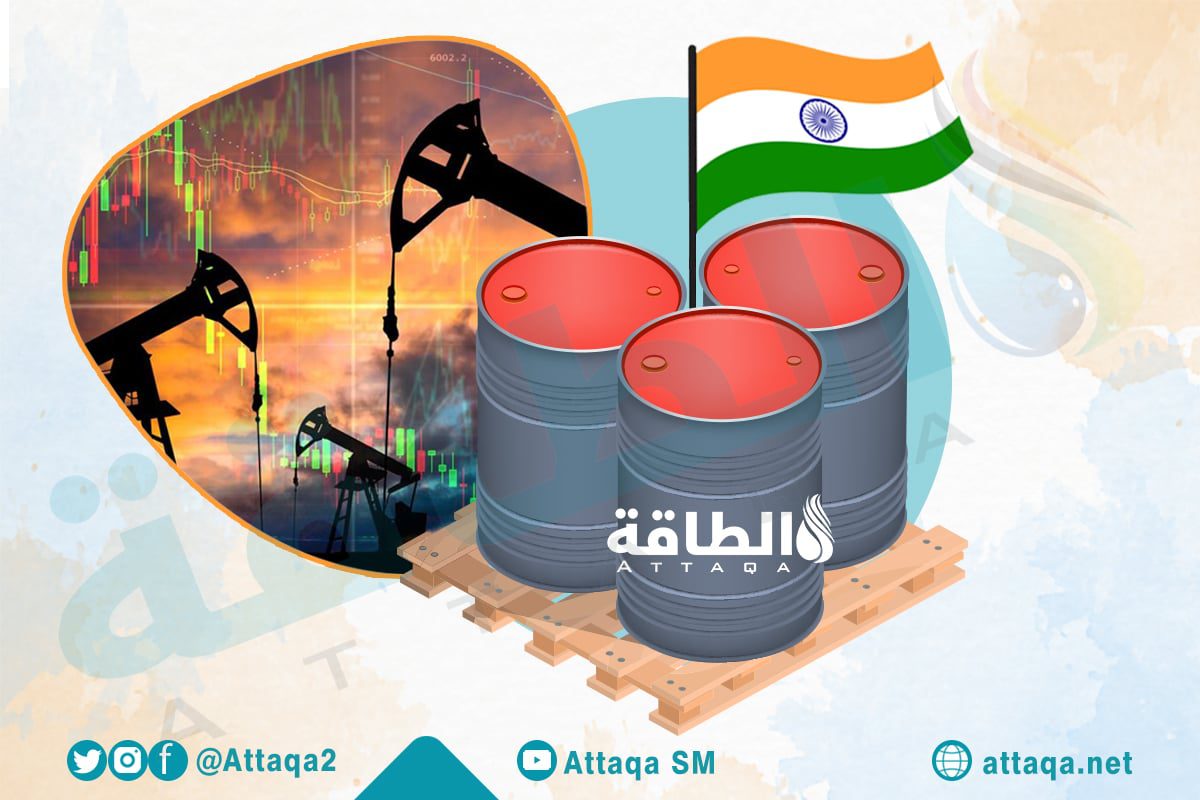India’s oil imports, during the fiscal year ending in March (2023), witnessed a significant increase in Russian oil flows, at the expense of the oil of OPEC countries.
India hastened to seize the largest number of cheap Russian shipments over the past period, with Moscow turning towards Asian markets after Western countries imposed sanctions on it following the invasion of Ukraine.
OPEC’s share of India’s oil imports fell at the fastest pace in 2022/23 to its lowest level in at least 22 years as cheaper Russian oil increased, according to data seen by the specialized energy platform.
The share of major producers is expected to shrink further this year as Russian oil continues to flow to India, Reuters reported.
India’s imports of OPEC oil
The share of members of the Organization of the Petroleum Exporting Countries (OPEC), most of whom are from the Middle East and Africa, in the Indian oil market decreased to 59% in the fiscal year ending in March 2023, from about 72% in 2021/2022, according to a Reuters analysis of data dating back to 2001/2002.
The data showed that Russia surpassed Iraq for the first time. to emerge as the largest supplier of oil to India; This pushed Saudi Arabia to third place in the past fiscal year.
India, which in the past rarely bought Russian oil due to high freight costs, has slashed OPEC’s share of oil imports and is now the largest oil customer for seaborne Russian oil, which was rejected by Western countries after Moscow’s invasion of Ukraine in February 2022.
The data showed that the share of the Middle East in 2021/2022 was 64%, while the share of Africa was 13.4%, and the share of Latin America fell to its lowest level in 15 years at 4.9% in 2022/2023, according to the data seen by the specialized energy platform.
India’s imports of Russian oil
The data showed that India shipped about 1.6 million barrels per day of Russian oil in 2022/23; This represents about 23% of its imports, amounting to 4.65 million barrels per day.
The decision by OPEC and its allies in the alliance known as OPEC+, in May, to reduce production, may increase pressure on OPEC share in India, the third largest oil importer in the world, later this year if Russian supplies continue to rise.
“Russian oil is already cheaper than similar brands in the Middle East, and it looks like OPEC is hurting itself by cutting production,” said Ehsan Ul-Haq, an analyst at Refinitiv.
He added that the production cuts will further erode the market share of the Organization of the Petroleum Exporting Countries in Asia, according to Reuters.
Heavy intake of Russian oil boosted the share of CIS countries to a record high of 26.3%, and reduced the share of Middle Eastern and African countries to a 22-year low of 55% and 7.6%, respectively.
Oil refining in India
The data revealed that India’s oil imports in 2022/2023 increased by 9% over the previous year; Government refineries intensified operations to meet the growing domestic demand for fuel after private refineries turned to exports instead of selling fuel at below-market prices locally.
Government data shows that local refineries collectively processed about 6% more crude in 2022/2023, at about 5.13 million barrels per day.
The data showed that, in March, India shipped nearly 5 million barrels per day of oil, a slight increase from the previous month. Russian oil accounted for about 36% of total imports.
“OPEC’s decision to cut production also helps Russia,” he said, adding that the planned supply cuts raised global oil prices while reducing discounts on Russian oil against benchmarks Brent and Dubai.
Russian oil prices
On the other hand, Indian Oil Minister Pankaj Jain said today, Monday, that Indian companies face “sometimes” delays in paying for Russian oil priced above the $60 per barrel cap set by Western countries.
Some Russian shipments are priced at more than $60 a barrel, a cap imposed by the Group of Seven nations, the European Union and Australia to curb Moscow’s revenue while allowing traders access to Western vessels and insurance.
Jain told reporters: “No one prevents us from buying Russian oil above the level of the ceiling price provided .. We do not use Western services,” according to Reuters news agency.
He pointed out that in the event that Russian oil prices rise above the ceiling, companies will be able to find alternative mechanisms for settling payments on their own, explaining that most of the Russian oil supplies to India take place at less than the ceiling price level.
related topics..
Also read..

Leave a Reply